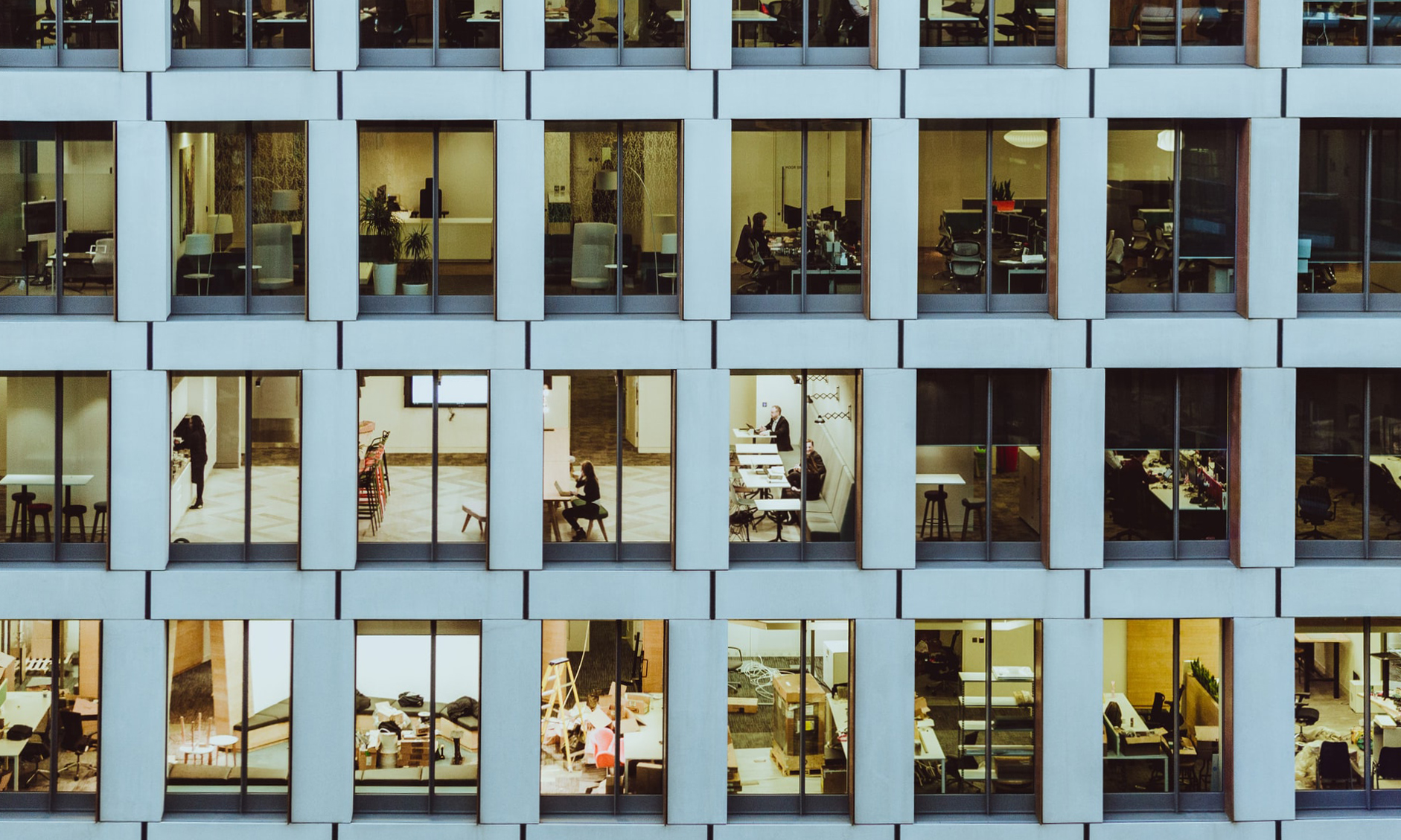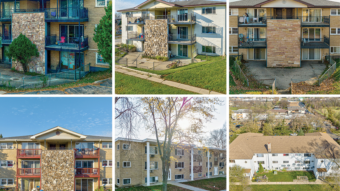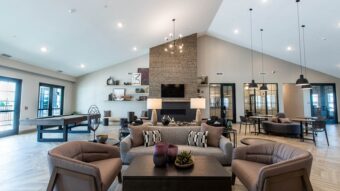Right now, millions of people are getting a new-found taste for 30-second commutes and roll-out-of-bed attire. But COVID-19 protections will eventually lift and when these employees return to their offices, they will notice some changes.
Workers will enter a new normal on day one of their return, and then another, different new normal in the days and weeks ahead. A year or more from now—and potentially, for years beyond—the office as we know it will continue to change.
“Like everyone, we’ve been trying to figure out what tomorrow looks like,” said Wes LeBlanc, principal and strategy director in Gensler’s Chicago office. “As a firm we’ve been working through what some of the longer-term applications are, which will evolve based on changing guidelines over time.”
I.
When stay-at-home mandates are first lifted, the first task will be to find reasonable methods by which employees can safely coexist. The biggest initial concern is de-densification and creating methods to institute physical distancing. As innovative as grocery stores have been, offices will have to find solutions that are more robust that putting masking tape down on the floor to create artificial boundaries.
Introducing shift work—which may be an alien concept to many office workers—is one way to quickly address reduced capacity within offices. It will be interesting to see, however, if employees are amenable to coming into the office outside of the typical nine-to-five stretch.
“There’s so much unknown territory. Each company is kind of rewriting the rules,” said Todd Baisch, AIA, LEED AP, principal and design director with Gensler Chicago. “Most aren’t anticipating having 50-person departmental meetings, for example, so we have to figure out how to set up those work environments to allow folks to remote in.”
Both the property management and tenants are going to have to engage in enhanced cleaning and sanitizing procedures to make people feel comfortable about spending numerous hours in the office. And the cleaning regimen has to be not only thorough but highly evident. Janitorial teams can take a cue from the hospitality industry and find the office space equivalent of placing a mint on the pillow—something that signals that the space has been cleaned.
In tenant spaces as well as in the lobby, sanitation stations will likely be a standard site from the get-go. The lobby presents another challenge, as it’s the bottleneck through which most of the building occupants travel, and usually at the same times of the day. If there aren’t alternate entrances, shift work can help. So too can staggering start and end times by as little as five minutes—just enough to reduce the number of people in close proximity around the elevator bays.
II.
After the initial return, there will be an interim period as office workers adjust to a new, hopefully brief, normal. This encompasses the months ahead, before the rollout of a vaccine or other viable treatment for the COVID-19 virus. During this phase, many office occupiers are going to have to implement some level of workplace zoning to keep employees as separate as possible.
Offices have gotten more intimate in recent years. Teams are typically grouped together to enhance collaboration, often with bench seating or as minimal partitions as possible. Even conference rooms epitomize this move toward proximity as more and more offices include “huddle spaces.”
So how do you maintain physical distancing in an office environment? Gensler has made use of a number of tools to maximize the efficiency in a space while adhering to recommended guidelines from the CDC regarding the physical distance that individuals can healthily maintain.
These computer-generated models are based on parameters that the Gensler team puts in. The tools analyze existing layouts, apply generative algorithms based on social distancing or other parameters and produce an optimized plan for that space, including what desks and other furniture are available and how they can best be used. If and when expert guidelines change—say a six-foot separation is deemed insufficient and the buffer increases to eight or ten feet—it’s simply a matter of changing the parameters and running the algorithm again.
For health and safety reasons, having employees separated from each other by empty workstations will have to be one arrow in the quiver against the spread of COVID-19, even if it is not a sustainable solution.
“Real estate space is a capital intensive good. It’s not viable to have it unutilized for significant periods of time,” said LeBlanc.
With that in mind, many employers may encourage some of their workforce to continue to work as they have for the past couple of weeks. This could mean splitting time between home and the office or working from home full time. That will depend greatly on what level of productivity each individual employer has witnessed during this experiment.
III.
Long-term, there are still a lot of unknowns. The one question on the minds of those who specialize in office real estate is whether companies will be pleased with the results they achieved with so many working from home and as a result opt for smaller footprints when their lease renewals come up. It turns out that there are competing factors that might make this a wash.
Year after year, employers have shaved a bit off of their square-foot-per-employee ratios. On paper, it would make sense that the pandemic would push that trend out even further. But even assuming that a sizable portion of office tenants’ employees stay home, physical distancing will still have to be maintained for those that remain in the office.
Baisch doesn’t believe that desks will start to grow again or that cubicles will make their return. However, workstations will likely be placed farther apart from each other. Circulations paths will also be widened. The office of the future might have a little more breathing room, offsetting any loss of bodies to work-from-home status.
One trend to keep an eye on is hoteling—whereby workstations are unassigned and multiple employees share desks at different times of the day or week. Surely there’s no future for this tactic in the age of COVID-19, right?
“There really are two reasons why companies have gone to this model. One was as a space saving equation; if that was the only reason, most of those failed,” Baisch said. “In parallel with that, however, was also getting employees to understand that a workplace can have more than one place for them to get their work done.”
Desk hoteling is generally not implemented in a vacuum. It’s usually instituted along with other options, such as cafes, conference rooms, conversation stairs and the aforementioned huddle spaces. As the concept of the open office has evolved, users have incorporated more flexibility to allow teams to collaborate or for individuals to do heads-down work. The fact is, open offices and desk hoteling afford too much efficiency for employers to dismiss them.
That said, employees working in a post-pandemic world will have new-found wants and needs in their office spaces. Support for better indoor air quality will only be elevated. Even more than before, employees will clamor for additional natural light and access to outdoor spaces.
“These issues are at the top of the list for employers right now because for just about every company, most of their costs walk in and out of the door every day,” LeBlanc said. “If it really matters to the employees then it’s something that employers need to be responsive to.”
The main feature that users will want to build into the offices of the future is resiliency, creating a workplace that can accommodate varying levels of on-site staff. There will be future crises—maybe new pandemics, perhaps climate-related emergencies. Regardless of what new challenges corporate users face, those that try to think of everything will be in a better position even when the unthinkable occurs.
The way we work has already fundamentally changed in just a few weeks and there is no returning to our old offices. When we do go back, it will be to spaces rewritten and revised. And there will be new, fresh drafts in the weeks, months and years ahead.




